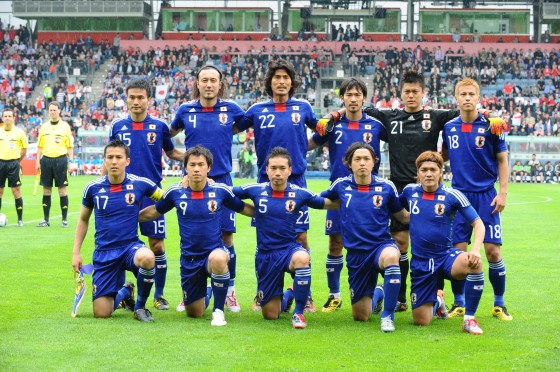IS HIGHER EDUCATION POSSIBLE ON A "SMALL GOVERNMENT" PLATFORM? PROBLEMS OF JAPANESE UNIVERSITIES SEEN FROM A UK PERSPECTIVE
The changing role of the state

Kariya Takehiko
In March 2011, a conference was held at the Nissan Institute of Japanese Studies of Oxford University, to which I belong, on the subject of higher education. I took part as one of the conference’s planners. The event was built around the theme of the state’s role in higher education.
University education in Europe, which achieved development mainly around national universities, is now at a turning point. In exchange for expanded educational opportunities, heavy fiscal burdens have been placed on the state. The state also faces a growing demand for accountability to taxpayers with regard to whether the results match the fiscal expenditures. In response, movements have been initiated for assessing education and research at universities and for linking the evaluation results with fund allocations to universities.
In the United Kingdom especially, these movements have coincided with vigorous and ongoing discussion on hiking the tuition rates. A change has occurred in the relationship between universities and the state. The conference was for the purpose of embracing this change and, with an eye on comparison with Japan, discussing higher education systems of European countries such as the United Kingdom, Germany, France and Italy, and roles of the state.
There are reasons behind why higher education and the state’s roles have become important themes. European countries have over many years adopted a no-tuition fee system for higher education. Almost all universities are “national” institutions. The ability to maintain these systems without difficulty owed to the strong recognition and acceptance of universities within society as public property, benefitting society as institutes for production of and developing human resources with advanced knowledge. Unlike in the United States or Japan, not everyone in Europe intended to go on to university until a few decades ago; only certain, limited numbers of people entered university. Put it differently, universities were research institutes that produced knowledge, and at the same time institutions providing higher education to a limited ‘elite’ population. Behind this system were class-related barriers, and such structures needed to fit into both society and economics that do not have the need for a great number of these graduates.
However, for the last 20-30 years, circumstances have completely changed in Europe. Under the globalized knowledge economy, human resources possessing higher knowledge and skills are needed more than ever. This is why it is essential to expand university education. Moreover, in tandem with economic globalization, structures whereby university education is made available across national borders mainly in the EU need to be created to enable human resources with higher knowledge and skills to move more freely and transcend these borders. This spurs the need for expansion of university education and structures that allow students this greater movement.
Against the backdrop of pressing fiscal burden, the time has also arrived for each of the above-mentioned European countries to be forced to accommodate their policies for “welfare states.” Continual provision of unemployment benefits to young jobless people has similarly placed significant financial strain on these states. The result of this is the requirement for, as the Blair government in the UK once pursued, a shift from the policy of guaranteeing “full employment” to one of promoting “full employability.” And this also creates the need to expand and improve higher education.
In the pursuit of social equality, there is also a concept that “equal opportunity,” under which educational and training opportunities are expanded, is better suited to the times than “equal results” realized through provision of benefits. Amid such current perceptional change and awareness of problems has been a rapid expansion of higher education in Europe over the last decades.
Universal provision of opportunities for university education is, however, hindered by the state’s fiscal burdens. If there is a question of accountability, continuing to expend public funds on universities may not be permitted if they are to remain in their outdated condition. In response to such twenty-first century demands, university education and the roles of the state have been changing.
Japanese universities depend on private schools and households
Viewed in the same light as these European university education systems, which are based mainly on national institutions, the Japanese system’s peculiarity emerges.
First, compared to many European countries, the expansion of the number of students going on to university began at a significantly earlier stage in Japan. By the mid-1970s, the university entrance ratio over the same age cohort surpassed 30%, when that for the United Kingdom was only around 10%. Private institutions have also continually absorbed many of the students going on to higher education. Education provided by the national universities has not been free and their tuition fees begun to rise drastically from the 1980s. Compared to Europe, where the state mainly bears the expenses for higher education, Japan’s proportion of public burden in higher education expenses is significantly lower than that of other advanced countries. In other words, the role of the state of Japan on the fiscal side has originally been “small government.”
In addition, as Yano Masakazu has frequently noted, the burden of tuition fees on individual students in Japan is not based on the so-called beneficiaries pay principle. (“Japanese universities seized by lifestyle-related diseases,” Nihon Tosho Center, 2011). The parents in fact shoulder the burden of entrance and tuition fees, not the students who are the direct recipients of the education’s benefits. This can be discussed as an impact on university education through comparison with the situation in the United Kingdom, where tuition hikes are now at the center of public focus.
The British government sought to adopt a policy that would enable universities to, at their own discretion, raise the tuition fee cap from £3,290 up to £9,000 per year (until 1998 there were no university tuition fees). This was reportedly a measure to alleviate increased fiscal burden on the state. The policy change triggered radical protests at the end of 2010 by students in London as well as other sites around the United Kingdom. This direct action by students was brought about because the beneficiary liability is imposed on the students themselves, who are the beneficiary of education, unlike in Japan.
In the United Kingdom, students pay tuition fees on a deferred basis, by which an amount is deducted from their monthly pay after they graduate from university, and this amount depends on the salary. University education is therefore based on the beneficiaries pay principle, on the basis of which beneficiaries automatically take student loans provided by the state. This is why young people intending to go on to university in the future started the protests.
Looking at the situation in Japan, most of the costs needed for university study are paid not by students themselves but by their parents. Though the ratio of students using scholarship-loans is also rising in Japan, as Yano points out, the payment of tuition and entrance fees by parents, not the students themselves, is better seen as part of a gift of property from parent to child. From the students’ perspective, they do not feel that they are making an investment in their own future. Rather, they are aware that they depend on their parents to go on to university. The lack of awareness regarding university study could be said to be connected to this “anatomy of dependence.”
Private schools also take on 80% of the total university students in Japan. Many of these schools are financially weak ‘school corporations’ that depend heavily on students’ payments, including tuition revenues and entrance fees. The expansion of higher education grounded in dependence on private schools and households, as a result of this so-called small government, forms the most essential and structural characteristic of Japanese university education, as well as the bottleneck that has caused a host of problems mentioned below.
At the root of the persistent inequality arising from differences in the relative economic strength of households, in a time when greater educational opportunities are sought and countless unfruitful discussions persist on improving the quality of education, lies Japan’s unique history of the development of its higher education. Opportunities for higher education have been offered and (inexpensively) expanded, while the fiscal burden on the state has been kept at a minimum. Japan is now paying the price for having left expanding of education to the market mechanism, minimizing the fiscal burden on the state and implementing small government in higher education areas ahead of every other country in the world.
Even worse is that this bottleneck has allowed the problems in Japanese university education to persist up to the present, with everyone aware of them but forced to live with them in a time when human resource development is progressing on a global scale.
Old yet novel problems
So then, where are the problems in Japan’s university education? Many of the problems I describe below have long been pointed out and there is nothing that is significantly new in my raising them.
The reason I discuss these problems here, despite my being fully aware of the above, is because they have become increasingly serious amid the external environment surrounding Japan, in which the flow of globalization is becoming particularly strong in the education and labor markets of other advanced countries. The qualities of these problems have also been changing. Yet there has been no improvement at all, and this is exactly what I want to bring into question.
1) Seeking employment
The first problem is that the four years of education are not sufficiently secured.
As already noted, third-year university students now conduct job searches starting around December and ending around the next autumn. Though it has frequently been pointed out that their academic learning and work during this period languish, the situation has in no way improved. The achievement of good results in the number of students who successfully find employment is an important evaluation standard for universities in their recruitment of new students. Universities cannot force students to study to the point of constraining their job hunting.
2) The Curriculum
Second, it is difficult to systematize the curriculum, and learning ends up being broad and shallow.
Universities offer many types of classes with weekly lectures (90 minutes) as the norm. Since students are, in effect, trying to earn their required credits in three years, they are busily increasing the numbers and types of classes for each round of registered courses. Consequently, they do not prepare for most of the classes, and the end result is a one-way didactic education of listening to lectures and passing exams without fruitful interactions between teachers and students. Moreover, at private universities, there is enormous attendance at many of the lectures, and considering the burden on the staff; it is difficult to provide feedback on aspects of learning, or rigorous performance evaluation. To say nothing of expelling students in order to maintain the quality of the education, which is not a simple matter because of the high degree of dependence on tuition fees. As a result, university students in Japan enjoy a student life where there is hardly any need to study outside the university.
According to the Field Survey of Learning and Lifestyles among University Students conducted by Benesse Corporation (2008), as many as 73% of students spent less than three hours a week on preparation and assignments (20% spent no time), while 81% spent less than three hours a week on independent study outside university classes (32% spent no time). In short, Japanese universities are places where learning only takes place in the classes.
3) Added Value
Third, as a result of the above, there is the issue of continuing to maintain a system whereby it is possible to graduate, unless there are extreme circumstances, without any rigorous evaluation of how much added value has been gained through four years (in effect, less than three) of studies. Making informal employment offers without asking what students have studied for how long, and what they have learnt symbolizes the lack of interest in the added value of a university education in Japanese society.
4) The Master’s Premium
To add to these factors, even though the university education is in effect three years, there has been no shift to graduate school education in the humanities and social sciences as has happened in other countries. As I will describe later, it is safe to say that this is also a problem. It is partly because even if you complete a Master’s degree in the humanities or social sciences, there is absolutely no appreciation on the employment market. In short, there is no Master’s premium. Once you have been hired for a job, there is no recurrent education at graduate school level to earn a higher academic qualification as is now taken for granted in other developed countries, and this is due to the absence of the Master’s premium.
Despite paying lip service to the need for advanced human resources development, or the importance of guaranteeing the quality of education, universities in Japan have, essentially, retained these weaknesses while making their way through the first decade of the twenty-first century.
Unchanging Reasons
While these problems have been pointed out for years, there is, in its own way, a reason for the lack of significant change even today. It is because this mechanism for a university education fulfilled a certain function.
In the past, corporations did not expect much from a university education. There was not much emphasis on the university record when hiring. In extreme cases, sports-minded students involved in extra-curricular activities were preferred over students who had worked hard on their studies at university.
The knowledge and skills necessary for the job were acquired through on the job training (OJT) after being hired. Therefore, it was enough for universities to provide signals that indicated trainability. Such signals included the deviation score as measured by the university entrance exams, and the university ranking (or sports department performance). They were indicators of the effort and diligence necessary to study for university entrance exams, as well as indicators of attentiveness to important points and being a good learner.
We might even say that at a time when there was latitude for the majority of university graduates to thoroughly acquire knowledge and skills on the job once they were hired as permanent staff, there was no need for society to look at what students were studying at university. Ironically, this was also the time when university entrance exams had the power to screen students and thereby provided clear incentives for high school students to study hard, which now have gone.
“Company Waiting List”
The “company queue” is a model developed by Kobayashi Masayuki and Yano Masakazu for this system of Japanese-style university education and employment that lasted until the end of the 1980s. The model states that if training capacity is provided as a single criterion like the deviation score rankings for universities, selection to the desirable workplaces (companies) is done in the order of the criteria (list).
If you are at the head of the list, you will be able to get a job with a desirable company. Conversely, if you are at the back, you are at a disadvantage for employment. The destination for corporate employment is determined based on such correspondence between university ranking and desirability of the employment destination, and after hiring, each company gives a good deal of time to developing the skills. Endowed with such a system, you might say that the universities fulfilled a certain role despite providing no added value as long as the university entrance exams signaled capacity for training.
Of course, this kind of understanding describes the competitive structure in a closed society like Japan. In the end, it was the relative order that was perceived as problematic, and as long as competition took place in the closed domestic space, whether or not the issue was consequent on the content of education was not perceived as a problem. The university entrance competition and the employment competition provided a relative struggle for ranking in a closed competition.
Fundamentally, this structure has hardly changed even today. In actual fact, due to changes in employment policies and labor market situations, the ratio of permanent employees with a university degree has dropped, and it is said that long-term OJT within corporations no longer functions. If that is the case, the added value of a university education should be questioned, but corporate action seems to be moving in the wrong direction. Inside the limits of closed competition, you can’t be the only one to stop. That is why the old structures continue to operate even when companies understand that they have a negative impact on human resources development as a whole in society.
Global Competition in Human Resources Development
Incidentally, even as the closed competition continues in Japan, major changes are taking place outside Japan. Globalization is rapidly gaining momentum in both university education and corporate headhunting. Universities are attracting attention as leaders in the global competition to develop human resources, and the so-called world-class universities are going head to head. Moreover, these changes are not restricted to educating academics in graduate schools, but they are also moving toward post-graduate professional education. Professional training at the Master’s level in social science fields such as business, law and policymaking (social policy and public policy) has been particularly noticeable in recent years.
Even at Oxford University where I work, there has been a rapid increase, not in training for researchers, but in taught courses aimed at earning a Master’s degree. In 2006, such students numbered 2,821 but by 2010, the number had soared to 4,027. Among them, more than half (2,209) are in the social sciences. Programs that allow you to get a Master’s degree in one year are popular and inundated with international students. I only have the statistics for the whole graduate school at hand, but non-English students account for 61% of graduate students.
This trend is associated with a trend among young people who have completed undergraduate education at excellent universities in other countries, to aim to earn a degree at the graduate school of a university with a global brand in order to gain a more advantageous standing on the global employment market.
Even at the School of Interdisciplinary Area Studies and the Department of Sociology where I work, English people are in the minority in the lineup of students, and in addition to students from the EU and North America, there is a conspicuous number of international students from China, India, Korea and Eastern Europe (unfortunately, few Japanese). After graduating from a top university in their own country, each of them is aiming for a Master’s degree from Oxford because they know that such a degree carries a high value on the globalized employment market.
Brand Strategy at Universities
International students from China have been particularly conspicuous in recent years. Graduates from the leading elite universities in China, such as Beijing University and Tsinghua University, come here aiming for the global brand of Oxford. With an internationally recognized master’s degree in hand in addition to excellent English language skills, most international students take up employment with global corporations.
The university also has a policy of internationalizing the faculties in order to attract excellent students from around the world. There are students from around 100 countries and 40% of the whole faculty have other nationalities than British. The international faculty provides really good guidance to the outstanding students that come from all over the world. A reasonable amount of reading is assigned to each course (on average, students have to read nearly twenty books for each course in a term), and based on the reading, students write an essay (approximately ten A4 pages every one or two weeks), stating their arguments. Moreover, the focus is on individual guidance and the seminar-style classes are conducted with an extremely small number of people. It is not a curriculum with enormous attendance and numerous courses without interaction. The students concentrate on few subjects and the focus is on individual guidance.
By reading a lot of books, writing many essays, and engaging in discussions, students learn to think critically and to present arguments. This is because this kind of added value is sought after in global competition.
Of course, it is expensive to provide such a meticulous education. Therefore, overseas students are charged fairly high tuition fees (when students from the EU are exempted, the fees at the university are on the high side). From the perspective of the university, accepting international students to the one-year Master’s courses is an important source of funding.
The Paris Institute of Political Studies (Sciences Po) in France has also started offering courses in English with the aim of capturing international students, and in the Netherlands, there are many programs on offer where it is possible to earn a Master’s degree by taking classes only in English. Even when we look to Asia, the higher education market and the labor market for its graduates are undergoing globalization. Branch campuses and schools affiliated with British and American universities are accelerating the expansion to Asia including China, Korea and Singapore. In Japan, there was an influx of overseas universities in the 1980s, but since the state did not recognize them as legitimate universities, they have not taken root in Japan. Although a small number of foreign universities still remain in Japan, the trend is slow compared to other Asian countries.
Japan Is Left Behind
Set against this kind of global change, problems with the competition for a place on the company queue without questioning the added value of education are coming to the fore inside the closed space of Japan. With domestic companies scrambling to get ahead, university graduates start job-hunting ever earlier, interrupting their studies at university and lowering the value of education. The continuing obsession with graduates from four-year universities without recognizing the importance of a Master’s degree in the social sciences is also due to the fact competing on relative merit is good enough inside the closed space.
In actual fact, both Japanese universities and the market for new graduates in Japan are protected by the Japanese language barriers and the hiring practices of Japanese companies. The OECD studies the inflow and outflow of foreign employees with university degrees or higher academic qualifications. According to the data, Japan has the lowest ratio of incoming foreigners among the member states, a mere 0.7%. Compared to the principal countries in Europe and North America where the ratio is above 10%, we can say that Japanese society is failing to attract highly educated employees from overseas (“The Internationalization Indices,” Report by the Internationalization Indices Review Committee (2009), Ministry of Economy, Trade and Industry). Seen from a different perspective, we could also say that highly educated personnel in Japan are avoiding competition with skilled personnel coming in from overseas. The same holds true for the world of Japanese academics.
Faced with the need to expand globally, some Japanese corporations are no longer obsessed with graduates from Japanese universities, but are turning to local hiring of graduates from foreign universities. At overseas affiliated companies of Japanese corporations, there is a diminishing need to dispatch Japanese staff from the head office in Japan to undertake management duties. Incidentally, this is not enough to have any direct impact on the university education market and the employment market in Japan.
Of course, internationalization strategies at Japanese universities have started a little bit at a time. The Global 30 (Project for Establishing a University Network for Internationalization) at the Ministry of Education, Culture, Sports, Science and Technology, as well as the private universities that have started to offer university education in English are a part of it. But, seen from an international perspective, these initiatives are somehow a little half-baked. There is little financial support from the state, or support from corporations. At the end of the day, this is because in Japan, on the whole, the state, universities and corporations are not serious about these initiatives.
In the first place, with the exception of some science and technology training, internationalization strategies are expensive as well as unnecessary in the view of both universities and corporations. If it is done without incurring any costs, it leads to increasingly negative attitudes. In the meantime, the internationalization of human resources development at the graduate school level is pressing ahead outside Japan. The reason for being left behind is the protection afforded by the language barrier and a moderate market scale that can get by without exposure to international competition. I have heard somewhere that this is not limited to universities alone.
That is why there is no point in bemoaning university education alone. If we leave the market to “small government,” which has minimized public expenditure, it is only natural that there will be a rational choice premised on the present situation in the university education market and the market for developing human resources. This is because there is no incentive for change. Until there is substantial change in the structure, the present situation will continue to worsen, with the exception of a small number of advanced examples. Or, will Japanese society, including the corporations, be able to collectively pull out of this absurd situation where they, on the whole, continue to generate negatives?
There is a mountain of things that universities are capable of, or should do because both Japan and the world are confronted with issues that can only be resolved intellectually. What is in question here is Japanese society itself.
Translated from “‘Chiisana Seifu’ ni koto-kyoiku wa kano ka – Igirisu kara mita Nippon no daigaku no mondaiten (Is higher education possible on a “small government” platform? – Problems of Japanese universities seen from a UK perspective),” Chuokoron, February 2012, pp. 76-84. (Courtesy of Chuo Koron Shinsha) [Februay 2012]




